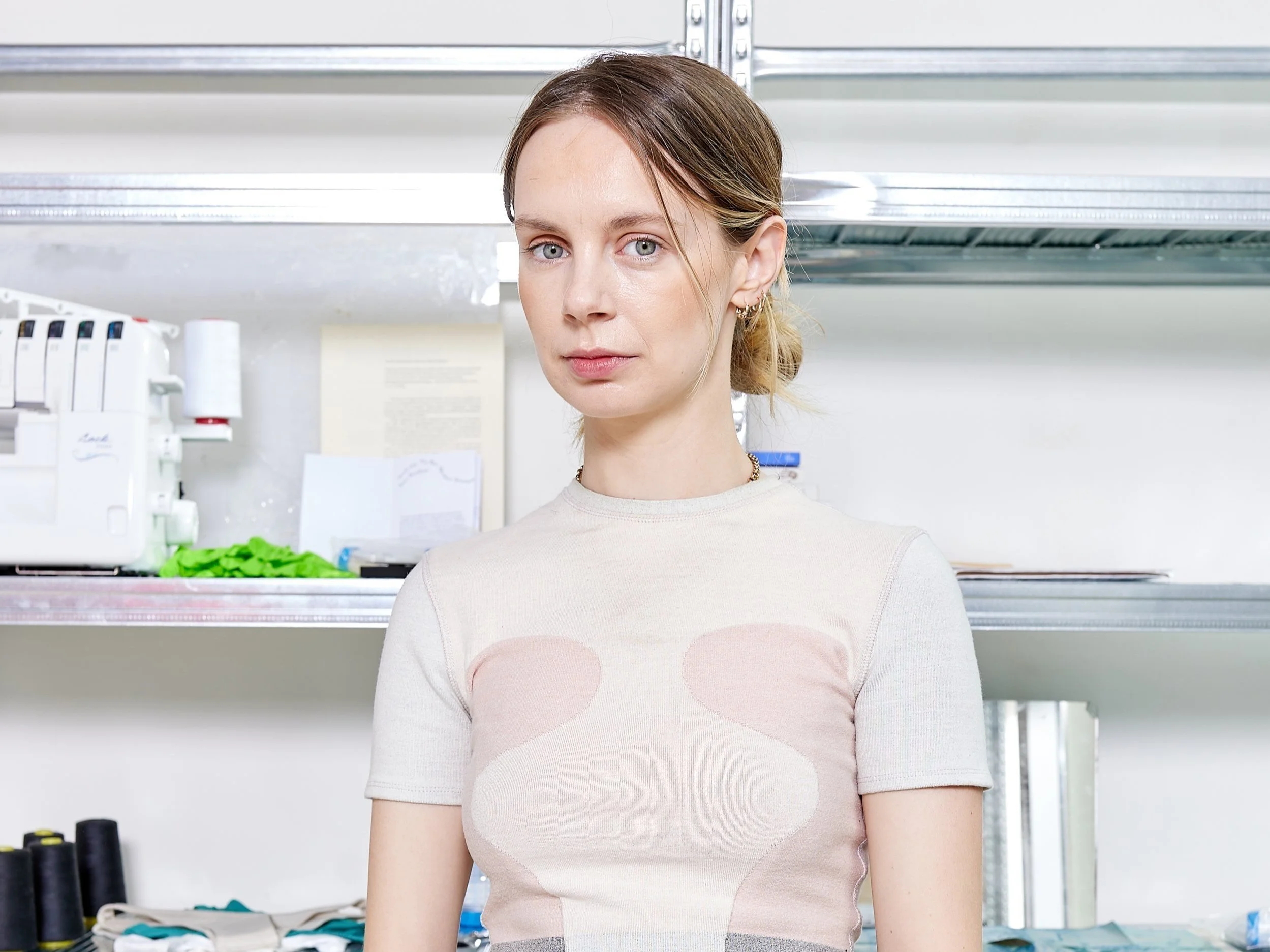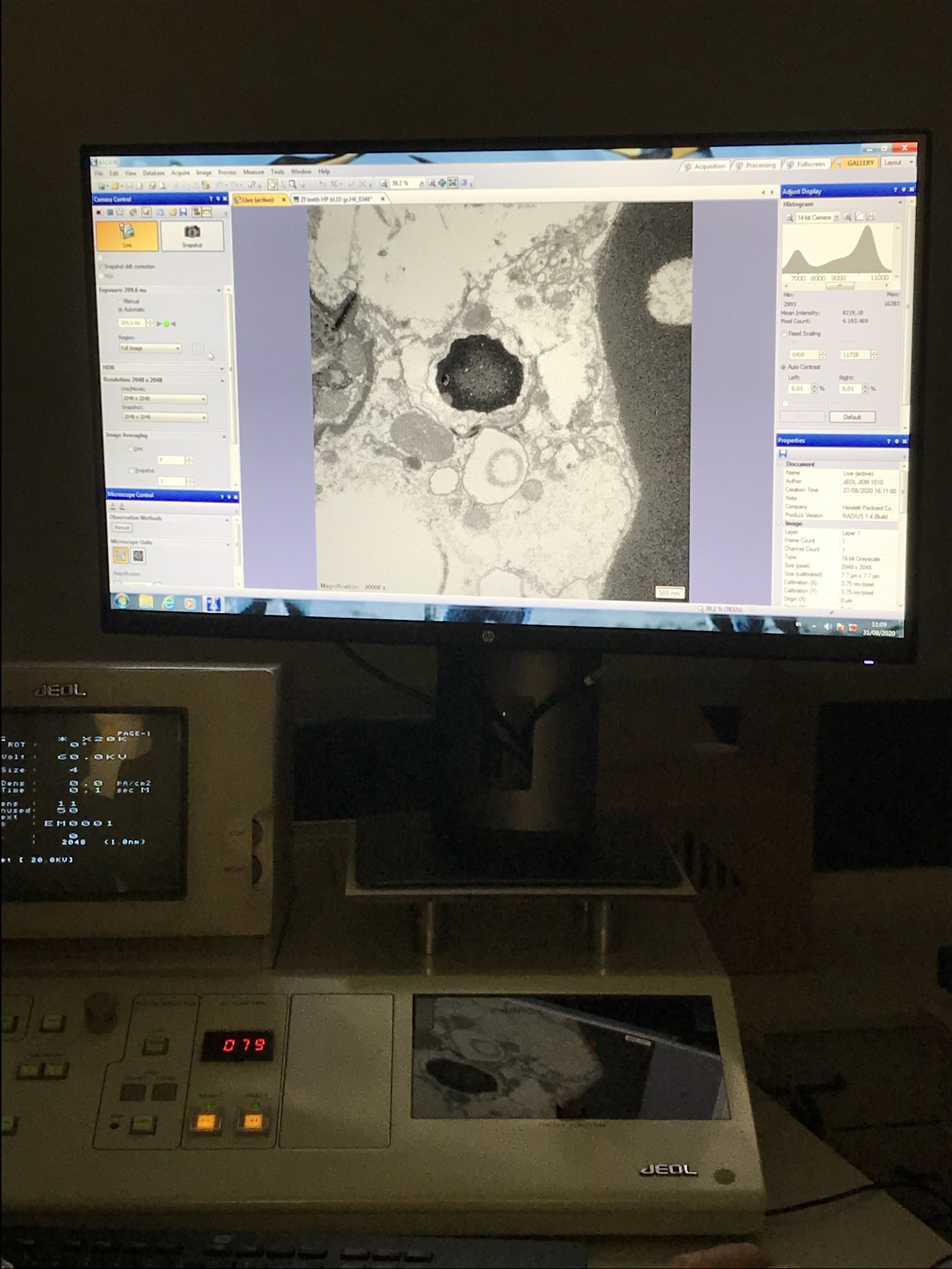Rosie Broadhead: Sustainable clothing is the new skincare routine
Today, we had the opportunity to interview Rosie Broadhead, Material Researcher & Founder of SKIN SERIES, a company that explores fashion as the intersection of textiles and the body.
SKIN SERIES focuses on material innovation in the fashion and textile industry, with Rosie's background in research and development in sportswear and performance clothing informing her work. Rosie leverages her expertise to study how textiles can influence an athlete's performance and overall well-being. She investigates sustainable alternatives to synthetic fibers and chemicals, aiming to create high-performance yet eco-friendly textiles. We are glad to have sparked such an interesting conversation with her.
How do functional materials play a role in enhancing comfort and performance while addressing sustainability?
"SKIN SERIES focuses on what already exists on the body, like the skin microbiome. I conducted research with a microbiologist at Ghent University to understand the specific bacteria that are healthy for the body. We tried to incorporate native healthy bacteria into textiles to encourage their growth, resulting in positive outcomes such as reducing body odor, encouraging cell renewal, and improving the skin's immune system.
This research proves how garments can positively impact our bodies. I also conducted research on natural ingredients like seaweed, rose leaf fibers, and other materials with therapeutic effects, which have been spun into yarn and knitted into textiles, offering antioxidant and anti-inflammatory benefits to the skin. Clothing can now be considered part of your skincare routine.”
How does SKIN SERIES facilitate innovation in the field of sustainable materials for fashion and sportswear?
"SKIN SERIES operates on a dual business model. I develop a collection of clothing, primarily next-to-skin items such as underwear, bodysuits, and t-shirts. This focus allows me to emphasize textile innovation and its importance to our bodies. Simultaneously, I develop textiles that can be sold to other brands and designers for use in their own collections. The goal is not just to develop these innovations for myself, but to scale them for a broader sustainability impact.”
What advice would you offer to fashion brands seeking to integrate more sustainability into their design and production?
"Our focus is on the interaction between textiles and the skin, creating a narrative about how our clothing can affect our bodies and the wider environment. This involves concentrating on natural ingredients and skin-friendly properties. Material production is one of the most impactful parts of the textile supply chain so I make sure that these ingredients contribute to a healthier ecosystem.”
How crucial is the collaboration between the supply chain and the brands in this transition?
"While it's beneficial for consumers to distinguish between cotton and polyester, the responsibility lies with brands and the supply chain to develop innovative, sustainable materials that can be cost-effectively implemented in the fashion industry. Collaboration is crucial across the entire supply chain—from raw material suppliers to spinners, fiber producers, textile makers, and brands. This conversation is essential for understanding each party's needs and capabilities, making the textile product development process more effective.
It shouldn't be up to the consumer to fully understand or educate themselves on sustainability.”
How can companies better understand the legislative framework surrounding sustainability in the textile industry?
"Increased policy on sustainability is a positive step towards significant change, however, brands need more support to understand and comply with these new regulations. It's also important for brands to take risks with new materials, such as bio cellulose, recycled fibers, or synthetic biology. This innovative space requires industry collaboration and support to explore and implement these advancements effectively. Consultants, material designers, and material libraries play a vital role in understanding the system and measuring the impact of new materials, helping brands and designers make better choices. More support is needed to bridge the gap between industry policy requirements and practical application.”
Thank you, Rosie, for your precious time and for sharing your insightful experience.
"Thank Between Conscious for the opportunity to discuss my practice, research, and design work, and to look at the future of the fashion and textile industry.”





